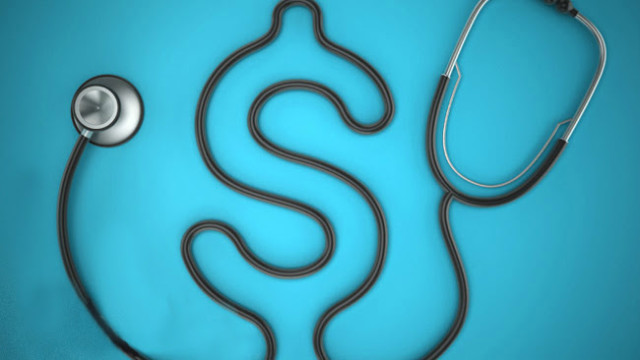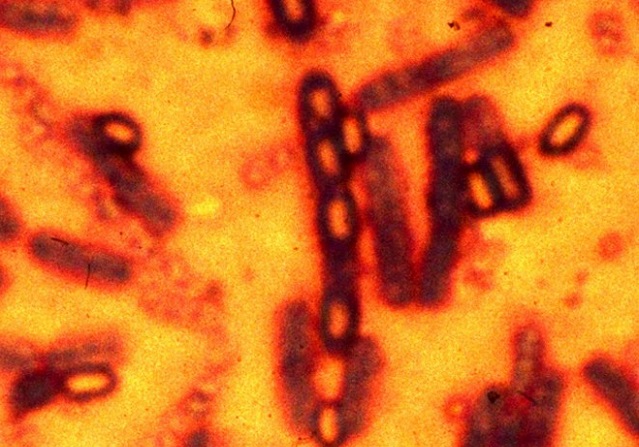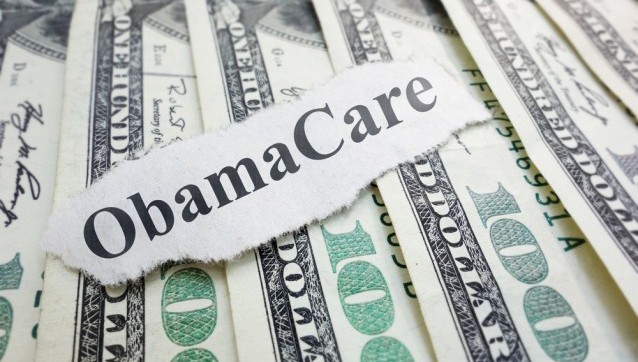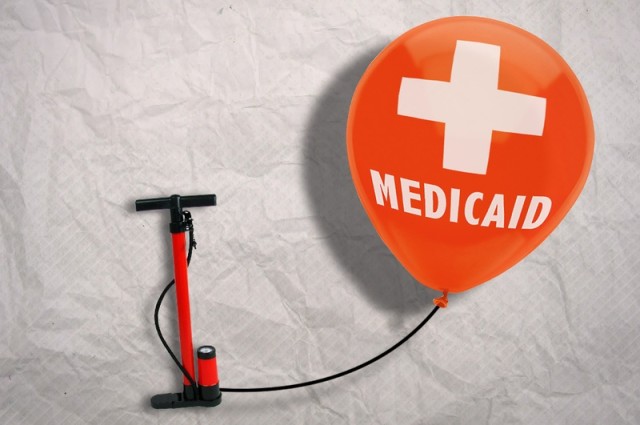FLORIDA: 25 Reasons NOT to Take Federal Dollars to Expand Medicaid
Monday, The Florida Legislature opened a special session to decide on the state budget and debate how Florida should move forward in regards to our healthcare future. The Senate offered a plan that supporters, including many business interests, sugarcoated in conservative buzzwords such as “a free market approach,” even though the plan is anything but. As we say here at The James Madison Institute, pro-business isn’t always pro-free market. House Republicans and Governor Rick Scott, for good reason, oppose expanding federal control and a flawed program in our state. The Senate approved its plan Wednesday and the House is set to debate the bill today and vote on it this Friday [May 5th].
The Tampa Bay Times recently released an editorial giving 25 reasons Florida should take the money and encouraging Floridians to “tell (lawmakers) to listen to the powerful moral and financial arguments for taking the money and providing access to affordable health care.” Yes, there is a powerful moral and financial argument to be made. Yes, solutions exist to provide access to affordable healthcare. No, the Times does not have the right answers for either.
As Forbes opinion editor, senior fellow at the Manhattan Institute for Policy Research, and friend of JMI, Avik Roy points out, “Progressives have long enjoyed wielding the straw man. “If you oppose expanding Medicaid,” they say, ‘you oppose health care for the poor. Plain and simple.’ But the truth is, if you support expanding Medicaid, you’re doubling down on a failed system, one that shuts the door on real reforms that could provide quality health care to those who most need it.”
The James Madison Institute offers “25 Reasons NOT to Take Federal
Dollars to Expand Medicaid.” Share our infographic today and tomorrow through social media. RT on Twitter here. Share through Facebook here. Find on our website here.
- Medicaid already takes up more than 30% of Florida’s budget: Currently, Medicaid takes up more than 30 percent of Florida’s budget and crowds out other public priorities such as education, public safety and infrastructure.
- Medicaid payment rates are well below market rates:Payments to healthcare providers under Medicaid are well below market rates. Exasperating this system would be anathema to free-market reforms in healthcare.
- The federal government is already $18 trillion in debt; Obamacare costs rise daily:The federal government is $18 TRILLION in debt with the cost of Obamacare rising daily, requiring even more money from taxpayers to feed the beast.
- The supply of doctors accepting Medicaid is shrinking: As a consequence of federal Medicaid price controls, the supply of doctors that will accept Medicaid patients is shrinking — this shrinkage will become more rapid under an expansion of Medicaid.
- Medicaid expansion leads to greater use of ERs, not less: A March 2015 survey of 2,098 emergency-room doctors showed Medicaid recipients newly insured under the health law are struggling to get appointments or find doctors who will accept their coverage, and consequently wind up in the ER.
- Arkansas’s “private option” costs state taxpayers tens of millions: Medicaid expansion is not working in Arkansas. The Arkansas legislature passed a “private option” healthcare plan similar to what the Senate in Florida is proposing and the price tag is rising by the month under Obamacare’s Medicaid expansion and state taxpayers will now have to pay tens of millions to cover the unexpected costs. The proposed plan in Florida could cost far more than projections indicate.
- Mandated premiums create inefficiencies in supply and demand for healthcare services: When premiums for healthcare plan participants are mandated and set by legislative action, it is nothing more than market distorting price controls, which ultimately create inefficiencies in the supply and demand for healthcare services
- Feds won’t approve Senate’s special waivers; Florida left with traditional Obamacare expansion: The Senate’s plan includes a requirement that enrollees work, attend classes or prove they are seeking work in order to maintain eligibility for healthcare coverage. However, to date the federal government has rejected all state-run expansion plans with a work requirement. They will deny this special waiver and we’ll be left with traditional Medicaid expansion.
- Oregon study revealed Medicaid enrollees hardly better off than uninsured: Medicaid expansion is not working in Oregon. In Oregon, a study was conducted among Medicaid enrollees that found Medicaid “generated no significant improvements in measured physical health outcomes.”
- Medicaid Expansion will do nothing to lower cost of overall healthcare delivery: Medicaid expansion would not lead to any type of price transparency in healthcare delivery, which does nothing to help lower the cost of healthcare delivery.
- Medicaid expansion does not lead to better health outcomes for the poor: Research consistently shows Medicaid patients frequently receive inferior medical treatment, are assigned to less-skilled surgeons, receive poorer postoperative instructions, and often suffer worse outcomes for identical procedures than similar patients both with and without health insurance.
- New Hampshire feels the financial burn and is reconsidering Medicaid expansion: Medicaid expansion is not working in New Hampshire. According to the National Association of State Budget Officers’ annual report, in New Hampshire Medicaid grew from 24 percent of the overall state budget in 2012 to 27 percent in 2014. In January 2015, the state’s Department of Health and Human Services announced that it was $82 million over budget, thanks to Obamacare, Medicaid expansion and to the original Medicaid program expanding with additional enrollees. Lawmakers are now deciding whether to continue the expanded Medicaid program which sunsets in 2016.
- The federal government’s promises aren’t reliable: The U.S. Supreme Court told the federal government mandating Medicaid expansion was unconstitutional. However, they admitted this year that if Florida didn’t expand Medicaid under Obamacare, they would not be incentivized to continue the Low Income Pool funding. If they would pull funding from some of the most vulnerable in the system, what wouldn’t they do?
- Florida taxpayers will foot the bill for billions: Florida taxpayers will be responsible for a tab of billions of dollars as the federal government requires increasing shares from Florida’s budget after a certain point if the state expands Medicaid under Obamacare. Even if the federal government keeps its “promise” on the funding percentage, Florida taxpayers will be responsible for 10 percent of the total cost of expansion, a tab that will run into the billions based on even the most conservative estimates.
- Having health insurance isn’t the same as receiving healthcare:Medicaid is socialized health insurance, not access to healthcare. There is no guarantee that just receiving socialized insurance means an individual receives quality service.
- The majority of the Medicaid expansion population consists of working-age adults: The overwhelming majority of the Medicaid expansion pool are made up of childless, able-bodied, working-age adults. Expanding a failing entitlement program for this population will only lock people into the cycle of dependence.
- Medicaid expansion creates a perverse disincentive to improving one’s financial status: In many cases, making just a few more dollars per year will actually cost a person thousands in copayments, deductibles, and out-of-pocket expenses resulting in being pushed out of Medicaid rolls.
- Illinois faced unanticipated cost increases in the billions:Medicaid expansion isn’t working in Illinois. Forbes’s Akash Chougule reports, “Health officials originally estimated it would cost $573 million from 2017 through 2020 when the state’s funding obligation kicked in. But nearly 200,000 more people enrolled in the program in 2014 than originally projected. State budget officials were forced to revise their cost estimates to $2 billion—more than triple initial estimates.”
- Medicaid will cost Florida way more than anticipated: The cost projections for a Medicaid expansion in Florida are unreliable and grossly underestimated. Several states are experiencing the financial strain of Medicaid enrollment figures well higher than initial projections.
- Medicaid expansion wouldn’t necessarily result in more coverage or access to care: Florida’s own Medicaid director stated that he couldn’t guarantee the expansion would result in more coverage or access to care.
- Medicaid expansion increases private insurance rates: Expanding Medicaid rolls will inevitably distort the risk pool causing private insurance premiums to rise, effectively shifting more of the cost of expansion onto taxpayers and those not receiving Medicaid benefits.
- Ohio taxpayers face a $400 million bill: Medicaid expansion isn’t working in Ohio. Ohio’s Medicaid expansion is expected to be nearly $1 billion over budget in June. With Ohio on the hook for 10 percent of the expansion’s cost by 2020 (if the federal government keeps its promise) that will result in an annual cost of over $400 million for Ohio taxpayers.
- Expanding Medicaid will likely increase fraud: Medicaid expansion will increase the amount of fraud and abuse within an already strained government program
- The systemic issues in the healthcare system will not go away:Expanding Medicaid does absolutely NOTHING to address systemic issues facing Florida’s healthcare system that impact everyone.
- Dependency cycle will expand beyond true safety net intent:
The idea behind the safety net programs has always been to serve individuals in need, while providing mechanisms to pull out of dependence into productivity, not to create generations of citizens who know nothing except government reliance. By expanding Medicaid to populations that are outside the typical safety net composition, we effectively enlarge and encourage the cycle of dependency to grow and become more ingrained in our culture.























